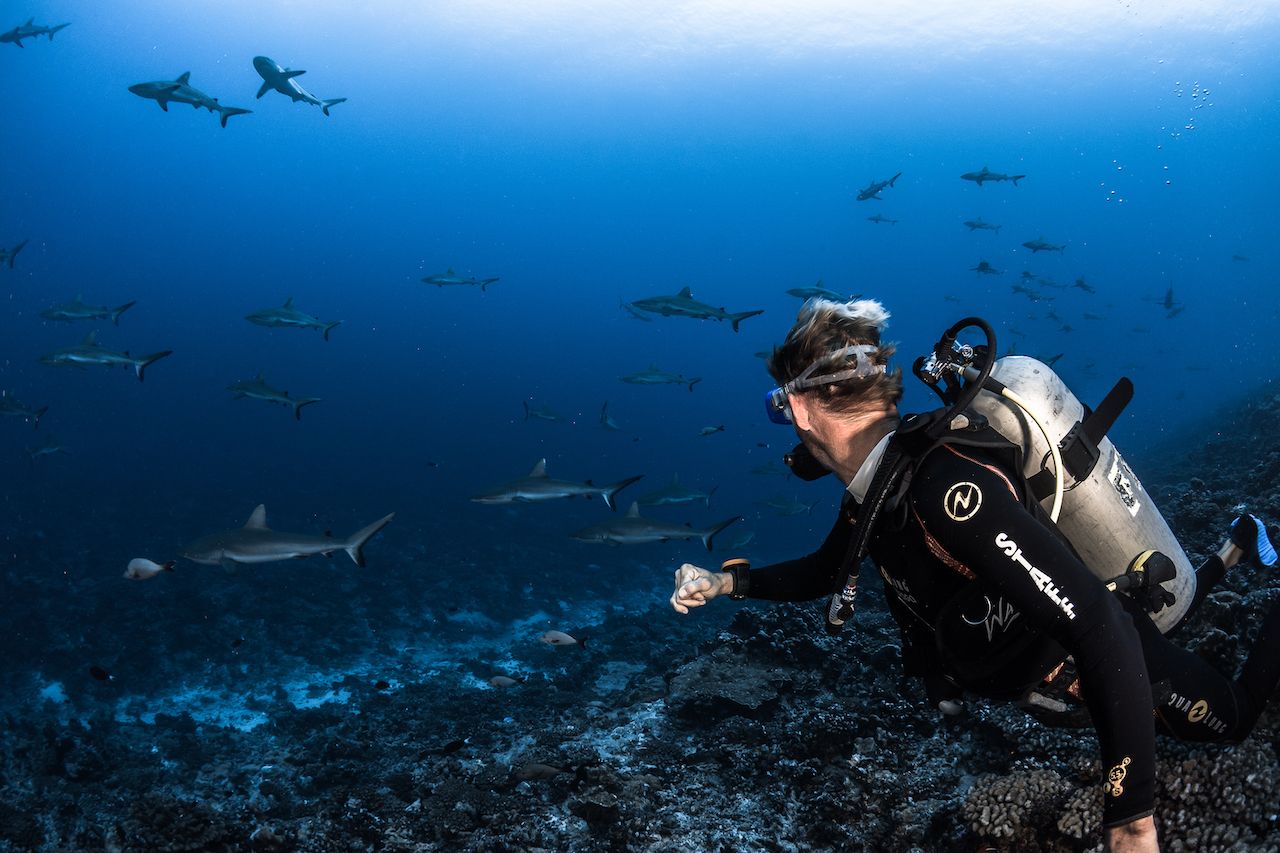Sharknado, sadly, is only the stuff of Ian Ziering, straight-to-TV fiction.
Swimming through a wall of sharks seems equally as far-fetched but is actually possible once a year in Fakarava atoll in French Polynesia. The 35-mile rectangular stretch of coral in the South Pacific is home to a small, 100-yard-wide channel called the South Pass, which for the weeks surrounding the summer solstice is filled with a venerable wall of sharks.



